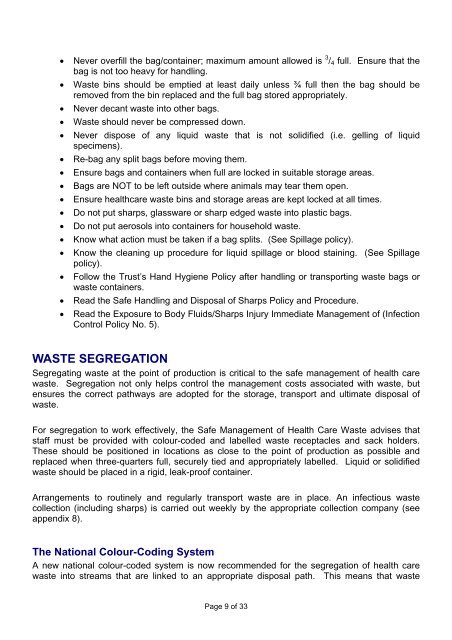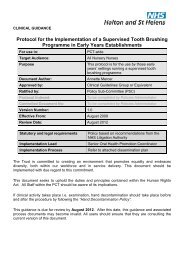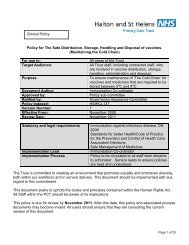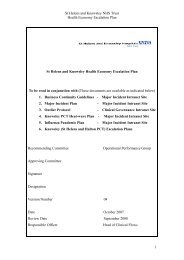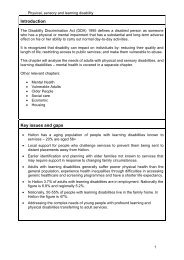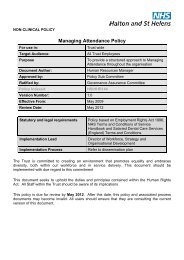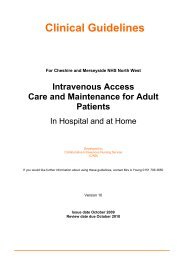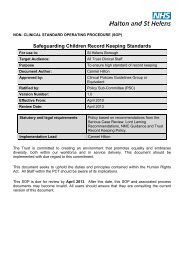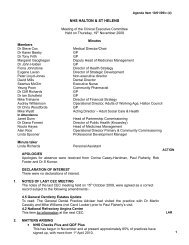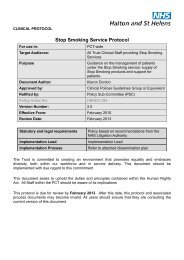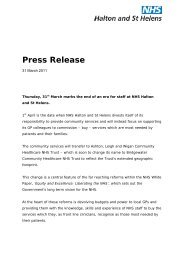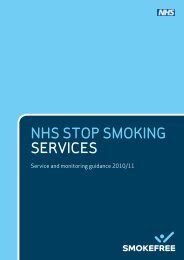Waste Management Infection Prevention and Control Policy No.24
Waste Management Infection Prevention and Control Policy No.24
Waste Management Infection Prevention and Control Policy No.24
You also want an ePaper? Increase the reach of your titles
YUMPU automatically turns print PDFs into web optimized ePapers that Google loves.
Never overfill the bag/container; maximum amount allowed is 3 / 4 full. Ensure that thebag is not too heavy for h<strong>and</strong>ling. <strong>Waste</strong> bins should be emptied at least daily unless ¾ full then the bag should beremoved from the bin replaced <strong>and</strong> the full bag stored appropriately. Never decant waste into other bags. <strong>Waste</strong> should never be compressed down. Never dispose of any liquid waste that is not solidified (i.e. gelling of liquidspecimens). Re-bag any split bags before moving them. Ensure bags <strong>and</strong> containers when full are locked in suitable storage areas. Bags are NOT to be left outside where animals may tear them open. Ensure healthcare waste bins <strong>and</strong> storage areas are kept locked at all times. Do not put sharps, glassware or sharp edged waste into plastic bags. Do not put aerosols into containers for household waste. Know what action must be taken if a bag splits. (See Spillage policy). Know the cleaning up procedure for liquid spillage or blood staining. (See Spillagepolicy). Follow the Trust’s H<strong>and</strong> Hygiene <strong>Policy</strong> after h<strong>and</strong>ling or transporting waste bags orwaste containers. Read the Safe H<strong>and</strong>ling <strong>and</strong> Disposal of Sharps <strong>Policy</strong> <strong>and</strong> Procedure. Read the Exposure to Body Fluids/Sharps Injury Immediate <strong>Management</strong> of (<strong>Infection</strong><strong>Control</strong> <strong>Policy</strong> No. 5).WASTE SEGREGATIONSegregating waste at the point of production is critical to the safe management of health carewaste. Segregation not only helps control the management costs associated with waste, butensures the correct pathways are adopted for the storage, transport <strong>and</strong> ultimate disposal ofwaste.For segregation to work effectively, the Safe <strong>Management</strong> of Health Care <strong>Waste</strong> advises thatstaff must be provided with colour-coded <strong>and</strong> labelled waste receptacles <strong>and</strong> sack holders.These should be positioned in locations as close to the point of production as possible <strong>and</strong>replaced when three-quarters full, securely tied <strong>and</strong> appropriately labelled. Liquid or solidifiedwaste should be placed in a rigid, leak-proof container.Arrangements to routinely <strong>and</strong> regularly transport waste are in place. An infectious wastecollection (including sharps) is carried out weekly by the appropriate collection company (seeappendix 8).The National Colour-Coding SystemA new national colour-coded system is now recommended for the segregation of health carewaste into streams that are linked to an appropriate disposal path. This means that wastePage 9 of 33


